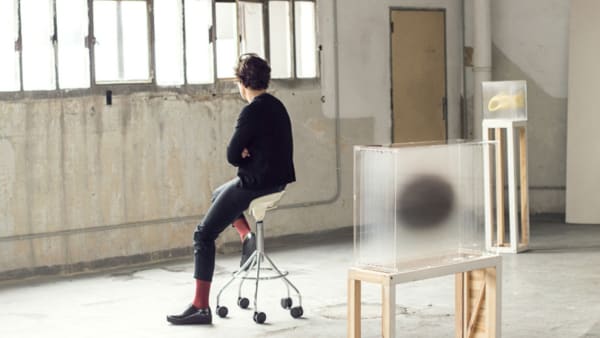Isabel Alonso Vega Spain, b. 1968
Isabel Alonso Vega, born in 1968 (Madrid, Spain), is a multidisciplinary artist who works between Mexico City and Madrid. She studied Fine Arts at the Universidad Complutense de Madrid. Central to Alonso Vega’s artistic practice is the utilization of chance as a medium. Her artistic evolution began with her exploration of liquid materials, leading her to discover smoke as the ultimate material to embody chance and randomness, thereby manifesting the unpredictable.
Alonso Vega’s work has been exhibited internationally, with shows held in prominent galleries spanning Rome, New York, Zurich, Seoul, Berlin, and beyond. Additionally, she has been selected for artist residencies, including the Montresso Art Foundation in Marrakesh and Proyecto H Contemporaneo in Mexico.
Isabel Alonso Vega's artistic approach is driven by a desire to give form to the intangible—to failure and loss. Her work transcends the conventional by capturing these emotions, preserving them as delicate, ever-changing sculptures. Ephemeral solids are fluctuating in crystalline cases, as if they were insects in an entomologist collection. By painting on multiple layers of translucent materials, Alonso Vega creates sculptures that freeze a single frame of transformation, giving physical presence to abstract phenomena. This method challenges traditional notions of form and content, as she reverses the relationship between the two— building physical structures from the ephemeral, using her own fears and pain as raw materials. Her sculptures are not forced into a static state. Instead, they evolve with the shifting light and the observer's perspective, mirroring the transient nature of clouds that silently morph and fluctuate in a space defined only by light. Her work focuses on the intent of reversing the relationship between form and content: giving physical structure to ephermeral objects, she uses pain as if she was crafting stone.
Isabel Alonso Vega is able to stress out the continuity between tradition both iconographical and chronological – and contemporary art. She applies archetypical figures and traditional techniques to contemporary languages, studying the possibility of representing, with a universally understandable vocabulary, the evanescent present reality.






